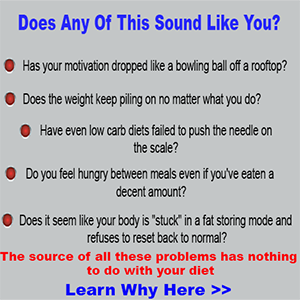Why I Don't Believe In The Paleo Diet + And Why My Hybrid "Paleo" Approach Is Where Weight Loss Is Headed
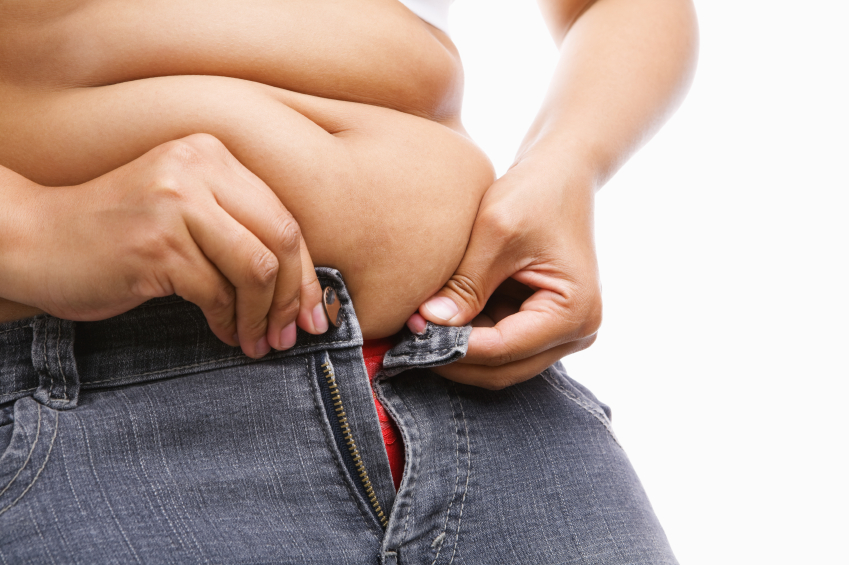 There are thousands of people—every day--that embark on a new journey, called the Paleo Diet.
There are thousands of people—every day--that embark on a new journey, called the Paleo Diet.
One of self-discovery, better eating, and a healthier lifestyle. Does it sound enticing?
Of course it does! Think about it, the Paleo Diet may promise more energy, rapid weight loss, better athletic performance, and a whole host of other benefits.
But it lacks one crucial piece of information:
It may be hard to follow and stick to! And when you find a plan—I mean LIFESTYLE—that is hard to adjust to…
…or you just don’t see the FAST results that you’re looking for…
Most people tend to quit the program and look for something else! So, why do more and more people fail on the Paleo Diet?
Well, there could be a bunch of different reasons! But before we get into the reasons, let’s first talk about what the Paleo Diet (or lifestyle) is…
The Nuts and Bolts of the Paleo Diet
The Paleo Diet stems from the thought that this is how cavemen (and women) used to eat.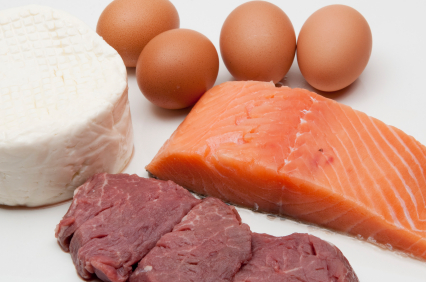
It consists of foods that you can hunt or fish, such as wild-caught salmon, meat, seafood, organ meat—basically anything that you could hunt and kill.
Also, the plan allows for foods that can be gathered, such as: eggs, fruits, vegetables, mushrooms, nuts, seeds, herbs, and spices.
The plan forbids certain foods including: beans, legumes (beans and peanuts), raw dairy, salt, and oats.
Although research has recently pointed to the fact that our early ancestors did eat more grains, the paleo approach avoids grains as much as possible.
There are some positives to this plan as it removes processed foods from your diet completely and introduces more healthy fats, proteins, and veggies into your diet.
It also encourages eating more wild-caught meats and fish, which contain a more robust fatty acid profile (more omega-3 fats and less omega-6 fats) and stresses the importance of raw fruits and veggies.
There are some drawbacks as well.
.jpg) The Paleo plan discourages high complex carb intake and items such as raw milk and other raw cultured dairy products that may add beneficial probiotics to your diet.
The Paleo plan discourages high complex carb intake and items such as raw milk and other raw cultured dairy products that may add beneficial probiotics to your diet.
Even though this diet is full of raw fruits, veggies, and wild-caught meat, people who start this type of lifestyle may not be able to adhere to the program for that long.
Why?
Well, there are many different reasons why people FAIL on the Paleo Diet…
Why People Fail on the Paleo Diet
The Paleo Diet is one of the most popular diet plans out there. Its popularity grew, thanks in part to the partnership with Crossfit.
Now, there are hundreds of thousands of people who follow the Paleo lifestyle or diet in order to lose weight, improve body composition, improve performance at the gym, and countless of other reasons.
Why is this diet so popular?
It works! That’s why people love to try to change to this lifestyle.
However, this doesn’t stop many people from FAILING at changing their current lifestyle or a Paleo Lifestyle.
The cause?
It may be too restrictive…people may not be eating enough…and it forbids people from eating certain foods—all thanks in part to the phobia of carbs.
The Paleo Diet strives to stay true to our ancestors, who were believed to have eaten only foods that they either hunted or gathered.
But because it’s so restrictive, it’s very hard for people to make the switch from a typical Western diet (heavily processed, lots of unhealthy fats, and too much added sugar) to a diet that focuses on nuts, seeds, wild-caught fish, grass-fed meats, and vegetables.
AND (and this is important):
The diet prevents you from eating some of your favorite foods—such as healthy CARBS!
That’s right…
If you talk to someone who is currently on the Paleo journey, they will tell you that you’re almost forbidden from eating healthy carbs like sweet potatoes or rice.
Unless you’re on a modified type of plan! But for the most part, people who follow the Paleo Diet avoid most complex carbs because they instantly believe they will turn into fat.
This portion of the diet plan could be the reason why more people aren’t tuning to this diet in order to better their body.
Now, the avoidance of carbs could easily be one reason why most people either choose not to start—or fail after a couple weeks on the plan.
Here are some other reasons:
1. Doesn’t Meet Expectations
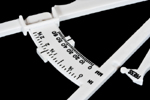 You live in a society where everything is virtually at your fingertips. If you need something, it may be readily available to you—or you have the means to get it.
You live in a society where everything is virtually at your fingertips. If you need something, it may be readily available to you—or you have the means to get it.
And this creates a problem when you’re trying to lose weight. Everyone who goes on a diet expects the diet to work fast.
Meaning they will lose 30 pounds in the first week and all will be easy the remaining time you’re on the plan.
However, this is not the case. Think about how long it took you to get to where you are today. A few months…a year or so…or many years of poor eating, lack of exercise, and a busy, hectic schedule is what has put you behind in the first place.
No diet plan will be able to give you instant results—it’s just not possible!
That’s why you need to remember that weight loss, changes in energy, and boosts in performance will take time.
Your body needs to heal—with the right foods—which will delay the weight loss process.
Many people who go on the Paleo Diet hoping for fast results, quit soon after a week—or a few weeks—because they aren’t seeing the results they had hoped to see.
2. You’re not Eating Enough
One big problem with the Paleo Diet is that most people, in general, may not eat enough to fuel their everyday activities.
Not eating enough does a couple things for your body:
First, it triggers a survival mechanism in the body that could make your body crave higher-calorie foods, such as carbs, cakes, processed foods, and sugar.
Basically, your body starts to crave junk.
And this makes it hard to stick with your diet plan, especially when your body is sending a signal to your brain that you NEED food.
Most Paleo meals may be lower in calories, all because most avoid carbs.
So, this leads to underfeeding, which again, signals the brain that you’re hungry and you need to eat.
3. You’re Eating Too Much
Sometimes people who are on the Paleo Diet overdo certain food groups.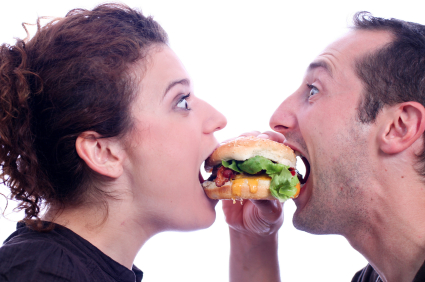
For example, people tend to overdo the nuts and nut butters when they are on this type of plan.
Granted, nuts and nut butters are extremely healthy, but they are heavy on calories (due to the high amount of fat), which could put you over your daily calorie needs.
And when this happens, you gain weight—plain and simple!
Not what you really want to do, since you started this diet or lifestyle with the hope that you would lose weight, gain energy, and improve your overall lifestyle…
…not add more stress and weight to your life!
4. Not Eating the RIGHT Mix of Foods
 With so many different variations of the plan, one can get confused as to what types of foods are considered Paleo and non-Paleo.
With so many different variations of the plan, one can get confused as to what types of foods are considered Paleo and non-Paleo.
For example, Kefir (which is full of probiotics) may not be allowed in every plan.
Same with milk…non-gluten, healthy carbs…and other forbidden foods!
When you start the Paleo lifestyle, unless you have done your research, one may not truly know what types of foods to eat and how much they should be eating.
You may tend to not eat enough carbs, fats, and other foods that would do more to improve your health—and not take away from it.
For example, you may not eat enough healthy fats to compensate for the lack of healthy carbs—but too much protein—which may not be able to starve off your appetite.
Another food group you may be lacking in would be carbs.
Carbs, which the media has demonized, may be one of the most important nutrients to eat, but may not be allowed on your plan.
And this could impact your performance while working out, could reduce your ability to lose weight, and may significantly impair your body's repair and recovery.
Now, as you can see, there are so many rules to follow, how can anyone expect to be successful on the Paleo Diet?
Not many, that’s for sure!
But:
What if I told you there was a way to keep the principles of the Paleo Diet…
…but still be allowed to eat your favorite foods and not miss out on any of these delicious carbs. Would you be interested?
The Hybrid Paleo Plan (otherwise known as Carb Cycling)
What if there was a way to get all the health benefits from the Paleo Diet AND be able to have all your favorite foods and healthy carbs.
Would you be interested?.jpg)
Of course you would! Remember, one of the biggest reasons why people FAIL on the Paleo Diet is they are unable to enjoy their favorite foods and enjoy those healthy carbs.
But there is a plan out there that allows just that!
It’s called the Carb Cycling Method!
You see, this type of plan allows you to enjoy the lower carb days that Paleo stresses…
…but also allows for a day (or two) where you’re able to enjoy your favorite healthy carbs, like potatoes, rice, legumes, and beans.
Why is this plan so great for your health—and your fat loss?
Well, simply put, the higher carb days keep your metabolism firing on all cylinders, enabling you to burn more fat during your workouts.
Plus, the lower carb days (like Paleo stresses) keeps your insulin levels low, which could help your body utilize and burn fat all day long without fear of losing your precious lean muscle mass.
Carb cycling, which was made popular by bodybuilders, may be the diet of choice for those looking to improve their body composition (i.e. lose weight).
 Although the low carb days are similar to the Paleo lifestyle, the higher carb day is what sets this plan apart from the Paleo lifestyle!
Although the low carb days are similar to the Paleo lifestyle, the higher carb day is what sets this plan apart from the Paleo lifestyle!
You see, having that higher carb day fuels your body and allows for more nutrients to get into your muscles fast and skyrockets your energy levels.
Plus, the low-carb part of the plan allows you to burn fat at an accelerated rate while preserving your muscle (as previously mentioned). It keeps your body primed to use insulin, which could help you burn fat and help you build more muscle.
It’s a win-win!
Now, if you think that you know everything about carb cycling (high and low carb days that help burn fat and keep muscle), there are some other things that you need to consider:
1. Timing
This is not some program that you can guess at and just start doing. It takes careful planning, preparing, and scheduling to make this plan work effectively.
For starters, there are certain days when you should be eating carbs and days where you shouldn’t!
For example, you head into the gym for a massive leg day. Should you go low or high carb?
If you answered high carb, you would be right! The reason is pretty simple: Carbs have high levels of glucose, which is your body’s main fuel source.
The higher carb day could help fuel your workouts and help your body to recover.
On the opposite hand, you should use a low-carb day on off days or days when you’re doing intervals and sprints.
This could help your body utilize your unwanted fat stores to fuel your workout!
2. Switch Out Fats and Carbs
Now, when you’re doing a paleo diet, in order to maintain your calories, you add more fat to the plan in the form of nuts, oils, and seeds.
This is the same exact principle to use on the low-carb day. Your low-carb days should include a protein source
(grass-fed beef, free range poultry and eggs, wild-caught fish, etc.), vegetables, and a healthy source of fat (avocado, coconut oil, olive oil, etc.).
However, when you have a higher carb day, you need to cut back on the healthy fat.
Why?
Well, you need to keep your overall daily caloric intake in check. So, while you are adding carbs into your plan, you are also adding calories.
So, by cutting the fat from your high carb days, you are simply replacing fat calories for more calories from carbohydrates.
It’s a pretty simple switch and one that you should have no problem doing!
3. Eat More Healthy Carbs (less bad carbs)
Carbs are a central component to this program!
And this is why you need to understand the difference between good and bad carbs.
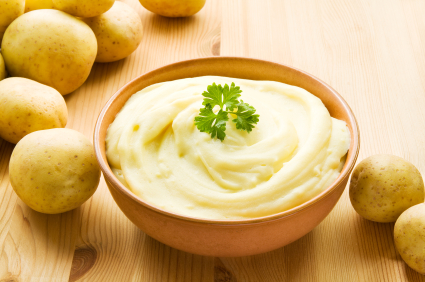 Good carbs include beans, whole-grain or sprouted grain breads and flours, oatmeal, quinoa, potatoes (sweet, white, purple, etc.), and rice.
Good carbs include beans, whole-grain or sprouted grain breads and flours, oatmeal, quinoa, potatoes (sweet, white, purple, etc.), and rice.
Bad carbs include sugar, cakes, cookies, pies, desserts, pizza, instant oatmeal, and doughnuts, just to name a few.
Now, if you want to maintain your weight loss, every fourth day you will have a higher carb day (depending on your training days).
This is also the day where you can enjoy your favorite meals—or even a dessert—without feeling guilty about doing it!
Yes, yes I know…desserts would fall under the category of a bad carbohydrate. But here’s the deal:
Face it, when you’re on a low-carb plan, you cut out all your favorite foods and desserts for the sake of losing weight and getting in the best shape possible.
But how healthy is that for you—mentally? Not very healthy!
And no matter how strong willed you are…or how mentally strong you are…staying on a plan that restricts all your favorite foods and desserts will eventually wear on you.
The result: endless servings at your local buffet!
That’s why—on your high carbohydrate days—you can enjoy a slice (or two) of pizza or even a couple cookies or a slice of pie—without ever having to feel guilty!
Not only does this help keep you focused, it serves as a type of incentive during the week! It will keep you focused and looking forward to that high carb day!
Now, you know the benefits of a carb cycling plan, but now it’s time for an example.
High Carb Day Example
Breakfast: ½ oatmeal, 2 whole eggs, and two handfuls of berries or a banana
Snack: Protein shake made with water and an apple
Lunch: Chicken breast sandwich on sprouted grain bread (bagel or English muffin), 1 cup steamed veggies
Snack: Two handfuls of nuts, 1 cup berries, 1 cup Greek Yogurt
Dinner: Homemade Chicken Pizza
Low Carb Day
Breakfast: 2 whole eggs, 1 medium banana
Snack: protein shake made with water, 1 handful of baby carrots
Lunch: Large chicken salad with lots of added veggies
Snack: 1 ounce cheese, apple (or medium piece of fruit), 2 handfuls of almonds
Dinner: 3 ounces chicken breast, 1 cup steamed veggies, 1 TBSP butter for veggies
So, just to sum things up, you will stay on a Paleo-style, low-carb plan for THREE days and every fourth day, you will switch to a high-carb day.
You may feel hungrier on low carb days compared to high carb days. The reason for this is the elimination of the complex carbohydrate.
One way to prevent hunger from ruining your progress is simply to increase your intake of protein and veggies.
This should help to satisfy your appetite and prevent you from overeating or craving junk food.
Take Home Message
There are many people that try the Paleo Diet or lifestyle in order to lose weight, increase their performance, and have better energy.
Many people fail to adhere to the diet because it’s too restrictive, meaning they can’t eat all their favorite foods and healthy carbohydrates.
However, there is a better way! The Carb Cycling Method allows for people to get all the benefits of the Paleo Diet (increased energy and performance and greater weight loss) without sacrificing their favorite foods.
If you’re looking to boost your weight loss—and you are tired or you FAILED while doing the Paleo Diet—then you should try the Carb Cycling Method.
You might not only enjoy eating again, but you may also boost your fat loss and improve your overall health.
RELATED HEALTH LINKS:

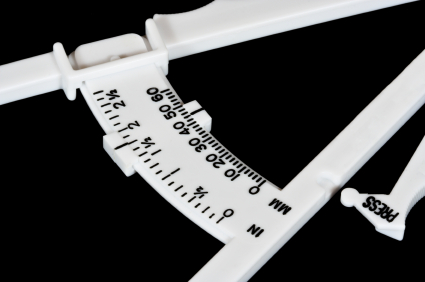

Toxins and Pesticides are Making You FAT! Here's What You Can Do To Protect Your Health
About Jayson Hunter & Jaylab Pro
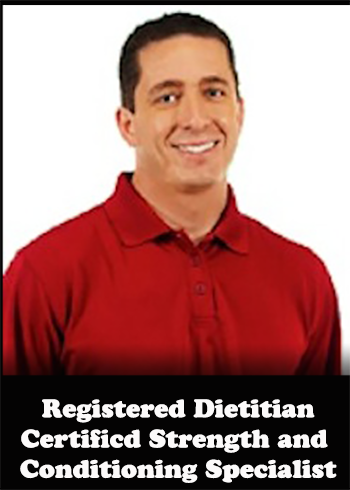
Jaylab Pro was founded by Registered Dietitian Jayson Hunter. Jayson has been recognized as one of America's foremost weight loss experts by America's Premier Experts™. He has also been featured in USA Today for this accomplishment. Jayson is also a best-selling author having co-authored multiple books in health & fitness and business growth. Jayson and the Jaylab Pro team are proud to create content that helps improve the lives of millions of people around the world. We hope you enjoy it just as much as others have.
 If you order a JayLabPro SmartShip product or any Combo Package, we will automatically ship you a new supply of the product or products you have ordered every month, starting 30 days after your initial order is shipped, and continuing until you cancel. The credit card you are using today will be billed the lowest available price for those product or products when your order is shipped, but shipping will be FREE. You may log into your customer account or call our customer service department toll-free at 1-888-9GETPRO (1-888-943-8776) between the hours of 8am – 9pm EST Mon-Fri to cancel future shipments, customize the timing of your shipments, or change the credit card used for billing.
If you order a JayLabPro SmartShip product or any Combo Package, we will automatically ship you a new supply of the product or products you have ordered every month, starting 30 days after your initial order is shipped, and continuing until you cancel. The credit card you are using today will be billed the lowest available price for those product or products when your order is shipped, but shipping will be FREE. You may log into your customer account or call our customer service department toll-free at 1-888-9GETPRO (1-888-943-8776) between the hours of 8am – 9pm EST Mon-Fri to cancel future shipments, customize the timing of your shipments, or change the credit card used for billing.





